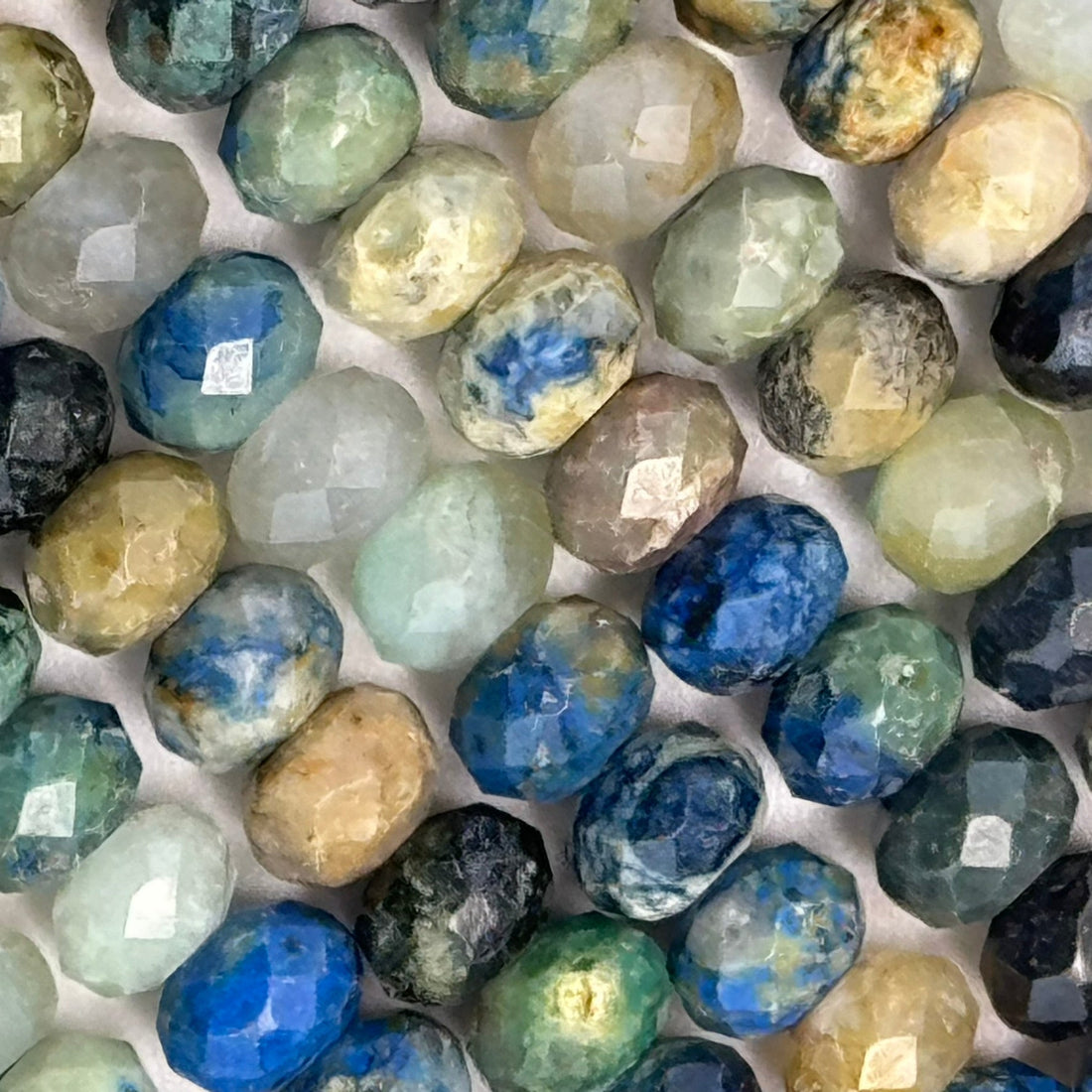
Everything You Need to Know About Azurite
Share
Questions and Answers
Azurite is a captivating blue gemstone that has fascinated gem lovers and collectors for centuries. With its rich color and historical significance, it’s no surprise that azurite remains an appealing choice for jewelry makers and mineral enthusiasts alike. Here are some frequently asked questions about azurite, its properties, and uses.
What is azurite, and what is its composition?
Azurite is a copper carbonate mineral with the chemical formula Cu₃(CO₃)₂(OH)₂. Its striking deep blue color is one of its most notable features, which is caused by the presence of copper. Azurite is often found in copper deposits and is sometimes associated with malachite, another copper mineral.
Where can azurite be found?
Azurite is primarily found in regions with a history of copper mining. Some of the most notable sources of azurite include Arizona, USA, the Democratic Republic of the Congo, Morocco, and Australia. These areas have large copper deposits, making them ideal for the formation of azurite.
What are the properties of azurite?
Azurite has a hardness of 3.5 to 4 on the Mohs scale, which means it is relatively soft compared to other gemstones. It has a deep blue to violet-blue color and forms in a crystalline or massive structure. Azurite can often be confused with other blue minerals, but its deep, rich color and unique appearance help distinguish it.
What is the historical significance of azurite?
Azurite has been known and valued since ancient times. In Egypt, it was used as a pigment for painting and dyes, especially in tombs and on papyri. It was also used in ancient Persia and by the Greeks and Romans. Azurite’s historical use as a pigment contributed to its reputation as a gemstone of importance, particularly in the fields of art and decoration.
How is azurite used in modern times?
Today, azurite is mainly used in jewelry making, often set in silver or gold. Due to its relative softness, it’s usually used for pendants, earrings, or rings that don’t experience rough wear. It’s also sometimes ground into powder for use as a pigment in art, similar to its historical uses. Some people also collect azurite specimens for display due to its striking appearance.
Can azurite be treated or enhanced?
Azurite is typically not treated or enhanced, as its natural color is already vivid and attractive. However, it can be polished to enhance its luster, though care should be taken during the process since it is a soft mineral. Azurite may also be found as a combination stone with malachite, where the two minerals grow together in a beautiful mix of blue and green.
Why is azurite considered a unique gemstone?
Azurite is considered unique because of its brilliant blue color, which stands out in the mineral world. The color of azurite is often deep and intense, making it a popular choice for collectors and jewelry makers who are looking for something special. Additionally, the rarity of azurite in large, high-quality pieces contributes to its uniqueness.
How does azurite form?
Azurite forms in the oxidation zones of copper ore deposits. When copper-bearing minerals like chalcopyrite or bornite are exposed to oxygen and water, azurite can form as part of the process. The mineral typically forms as a result of the breakdown of copper sulfides, leading to the creation of copper carbonates like azurite.
Is azurite related to malachite?
Yes, azurite and malachite are closely related minerals. Both are copper carbonates, but while azurite is deep blue, malachite is green. In some deposits, the two minerals can occur together, forming beautiful specimens known as "azure malachite" or "malachite-azurite" that display the distinct blue and green colors in one stone.
What is the best way to care for azurite jewelry?
Since azurite is relatively soft, it requires special care to avoid scratches and damage. It’s best to store azurite jewelry in a soft pouch or lined box to prevent it from rubbing against harder gemstones or objects. To clean azurite, use a soft cloth and mild soap with water, but avoid using harsh chemicals or ultrasonic cleaning, as they could damage the stone.
What are azurite beads, and how are they used in jewelry making?
Azurite beads are small, polished pieces of azurite mineral that are often used in jewelry making. Due to their striking blue color, they are typically used in necklaces, bracelets, earrings, and other jewelry pieces, adding a unique and vibrant element to designs.
Are azurite beads durable enough for everyday wear?
Azurite beads are relatively soft, with a hardness of 3.5 to 4 on the Mohs scale, meaning they can be prone to scratching and damage if not handled with care. For everyday wear, it's best to use azurite beads in jewelry pieces that are less likely to be exposed to rough conditions, such as pendants or earrings.
How can I take care of my azurite beads jewelry?
To care for azurite bead jewelry, avoid exposing it to harsh chemicals, excessive heat, or rough wear, as azurite is soft and can scratch easily. Clean the beads gently with a soft cloth and warm soapy water, and store them in a soft pouch to prevent damage.
What are the benefits of wearing azurite beads?
Azurite beads are believed to have metaphysical properties, such as enhancing communication, creativity, and mental clarity. They are also thought to help with emotional healing and intuition, making them popular in spiritual practices and energy work.
Where can I find high-quality azurite beads?
High-quality azurite beads can be found from reputable gemstone suppliers or jewelers specializing in natural gemstones. When purchasing azurite beads, it's essential to buy from trusted sources, like Reza Gem Collection, where gemstones are handpicked by experts like Reza Piroznia to ensure quality and authenticity.
find azurite collection on RezaGemCollection by clicking this collection